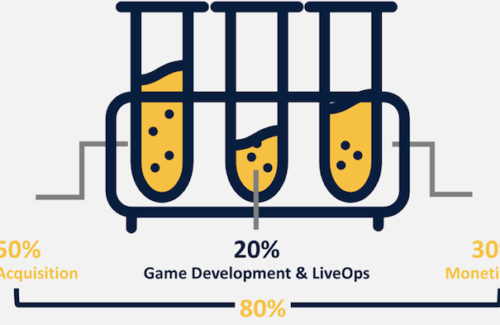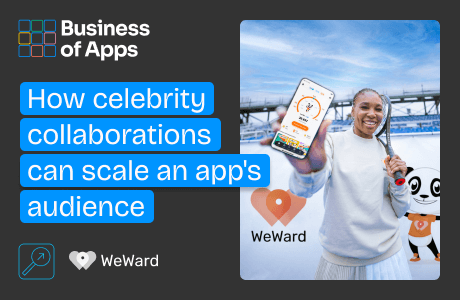
With Halloween just around the corner, we began thinking of the common “tricks” and “treats” that new mobile marketers face when just getting started on growing their app’s user base. More specifically, post-launch campaigns in that critical time of scaling user acquisition. It’s challenging for any marketer to increase user base cost effectively, yet at a good pace to keep up with internal growth demands.
For marketers new to mobile app marketing, here we explore the pitfalls to avoid and the windfalls to start implementing now in order to be successful through Halloween, and leading into the competitive holiday season.
Beware of Common Tricks
Don’t rush to scale faster than your app is ready
While you may be in a hurry to scale, your app must be fully functional and glitch-free before your campaign can launch. You app needs an easy to understand user flow and monetization process. A glitch or bug can lead to losing valuable users in a matter of hours, which impacts negatively on retention. If there is a bug, communicate this with your UA managers immediately so that they can factor this in when analysing campaign performance data.
Don’t be distracted by surface level performance metrics
Dig deeper into your data and don’t rely solely on a top level view. Keep the communication strong with your UA managers to compare benchmarks and have a more rounded view.
Also, set the right benchmarks from the get go. Comparing the results of campaigns that are performance-based versus channels such as Google and Facebook is like comparing apples to oranges. For an accurate comparison, test your campaigns with multiple performance-based partners instead and take it from there.
It’s easy to get lost in the data and jump to conclusions, so it’s important to look at the data scientifically. Beware of making the wrong correlations that could lead to lower performance outcomes. For instance, testing a lead source in a different geographic than where you want to run your campaign will give you misleading data, which could cause you to overlook a user base that is making smaller payments, but could have a higher lifetime value in the long run. Instead, gather more data and let the campaign develop organically.
Don’t apply the same fraud standards to all your campaigns
As there are varying standards for fraud in the industry, set benchmarks for your app and review them regularly. Then, use fraud tools to track and compare campaigns across multiple verticals with a more granular view. Monitor your traffic differently from campaign to campaign, and with a broader reach.
Rather than applying the same parameters for app A and B, speak to your partners and UA managers to better understand your apps’ user behaviour and determine what parameters really apply as fraud. Absolutes don’t work.
Grab These Treats
Set the right KPIs specifically for your campaign
Start by setting the key performance indicators (KPIs) you want to achieve and ensure it’s a level playing field for all partners. Allocate specific sets of KPIs: one for search functions; another for Facebook, one for your mobile ad networks, and so on. There is no one-size-fits-all.
Next, segment your user base around these KPIs, as the metrics vary by app and user base. For example, let’s look at retention: customers that use your app monthly might not become “Whales” (heavy-spending users), so you must gradually grow and nurture the relationship, without expecting them to jump a bar that’s too high for them too soon. So, adjust your expectations accordingly.
Focus on a long-term user acquisition strategy
Work step-by-step around your goals. Although it’s tempting to focus on volume early on in the campaign, being patient can reward you with greater lifetime value (LTV) of your customers. Scaling too fast can be risky when building a long-term UA strategy. Over-optimizing and narrowing down the user pool too early in the campaign can lead to a poorer performance and losing out on better opportunities in the long run.
Start by scaling your campaigns slowly, across different sources. Test campaigns on Facebook and Google to get a first impression of user behaviour and find your user flow. This way, you can review results early on, and scale across multiple touch points at the right time.
Once you have built a significant user base, act on it and optimize you high-value users.
Explore new channels, but do so pragmatically
If you are thinking of trying new channels for UA campaigns, enter with a thoughtful, methodical approach. Assess if the traffic source fits your product and target audience before making a decision. There are new opportunities rising that should be considered, for instance, the emerging short-form video app TikTok, which is capturing millions of users with entertainment content (800 million app installs across 150 countries/regions).
TikTok is just now opening up opportunities to marketers, and with its massive reach, it’s worth exploring for your brand. The platform is focused on creating authentic experiences for its users, and this includes trying to integrate advertising in a way that is less disruptive and more aligned with everyday user engagement, like sharing videos, commenting, and engaging in hashtag challenges. TikTok offers different ads solutions and formats:
- Vertical Ads: Brand Takeovers, In Feeds Ads, In Feeds Ads-Card
- Native Integrations: Hashtag Challenges and Lens/Stickers.
Also, it’s important to note that there are a few parameters that TikTok adheres to currently:
- Media buying is done on a cost per thousand (CPM) and cost per click (CPC) basis, and optimized towards effective cost per install (eCPI).
- Brands can only run performance campaigns (CPC) by working with an official partner, which will help you to unlock TikTok’s full potential for your brand.
- Brands can run campaigns on TikTok’s worldwide inventory with the support of official partners / AMs.
Being a trailblazer makes sense if you have the right kind of brand and budget, so really consider if this new channel is right for your UA strategy now, or if it can wait until your product or the platform is more aligned with your goals.











